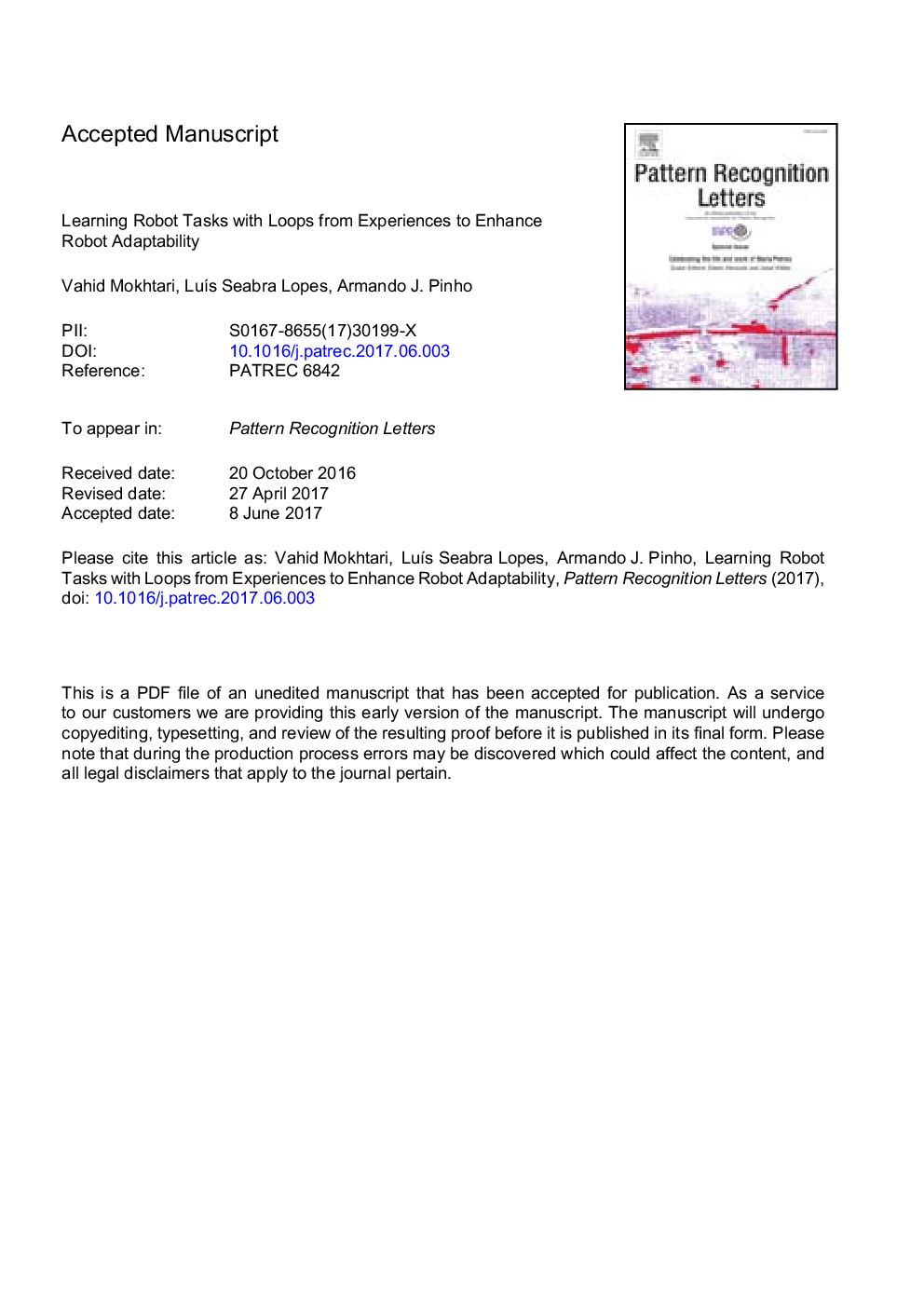| Article ID | Journal | Published Year | Pages | File Type |
|---|---|---|---|---|
| 6940844 | Pattern Recognition Letters | 2017 | 12 Pages |
Abstract
Learning robot task models with loops helps to increase both the applicability and the compactness of task knowledge. In the framework of Experience-Based Planning Domains (EBPDs), previously formalized by the authors, an approach was developed for learning and exploiting high-level robot task models (the so-called activity schemata) with loops. The paper focuses on the development of: (i) a method-Contiguous Non-overlapping Longest Common Subsequence (CNLCS)-based on the Longest Common Prefix (LCP) array for detecting loops of actions in a robot experience; and (ii) an abstract planner to instanciate a learned task model with loops for solving particular instances of the same task with varying numbers of objects. Demonstrations of this system in both real and simulated environments prove its potentialities.
Keywords
Related Topics
Physical Sciences and Engineering
Computer Science
Computer Vision and Pattern Recognition
Authors
Vahid Mokhtari, LuÃs Seabra Lopes, Armando J. Pinho,
